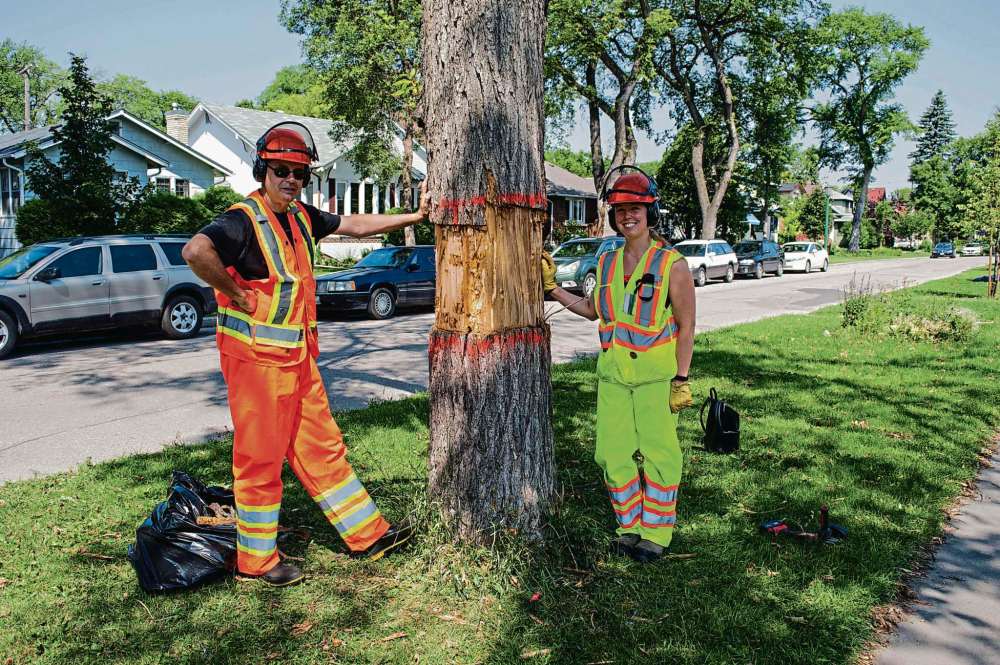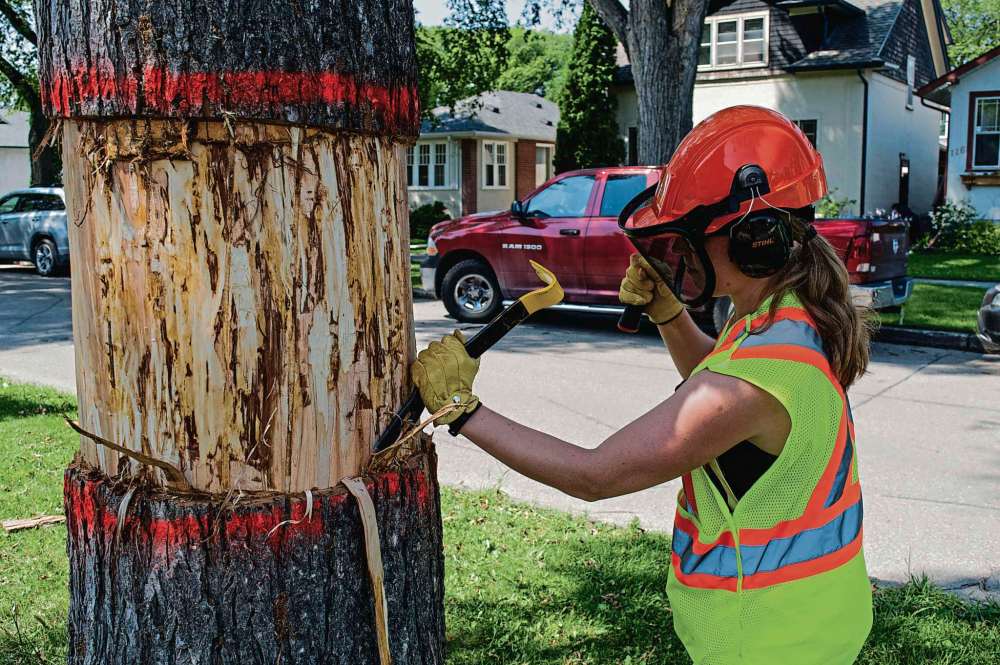Getting to the root of Dutch Elm
U of W professor leads study on ‘super shedders’
Advertisement
Hey there, time traveller!
This article was published 31/07/2017 (3045 days ago), so information in it may no longer be current.
A study taking place in Wolseley may help the City cut down on instances of Dutch Elm disease.
Dr. Richard Westwood, professor at the University of Winnipeg and chair of the bioscience graduate program, is conducting research to determine the signs of “super shedder” elms — ones that produce an especially high number of elm bark beetles, which are the carriers for the disease.
Westwood said Wolseley is a good sample for the study, as Dutch Elm disease is especially prevalent there, and the neighbourhood has some natural boundaries that allow it to be treated as its own entity.

On July 26, Westwood and a U of W undergraduate student were working on a highly infected tree on Sherburn Street, trying to identify external signs that would indicate that the tree had an unusually large number of beetles.
“In a perfect word, you would get this tree removed (before) the beetles leave,” Westwood said. “But because the City has been challenged with so many trees getting the disease, and they’ve had some cutback from city council, so basically they don’t have the resources to remove the trees fast enough.
“Too many are left standing into the fall, and by that time, it’s too late to remove it and get rid of the beetles.”
Westwood explained that Dutch Elm disease occurs when elm bark beetles land on the tops of elms and drill through the bark to feed. The spores that they carry on their bodies then begin to clog up the tree’s cambium, the network of tubes that carry nutrients from the roots to the branches. In no more than a year, an elm with the disease will die of thirst and dry up.
There’s no cure, so quick removal of infected trees is the most effective way of preventing the beetles from travelling from an infected tree to a new, healthy ones.
“People have been looking at Dutch Elm disease for almost 100 years in terms of coming up with ways to battle it. There’s no cure yet. These beetles are very tough because they’re under the bark and there’s no chemicals that will kill them under there.”
Westwood added that any chemicals toxic to the beetles would likely be unsafe to spray in urban areas. There are preventative insecticides that can be applied to elms, but they’re pricey and do become toxic to the tree after about 10 years. He says overall, the City has done a great job of battling the issue.

“We’ve still got over half our elms. Any other community in North America, they’ve lost just about all their elms, and quickly,” he said.
Undergrad Stefanie Sheard was on site and said the sheer speed of the disease has been the most surprising aspect.
“The tree, if it’s diseased, it’ll be down within a year at most—it could be down in weeks,” she said. Currently taking a degree in kinesiology, Sheard says she’s interested in forestry and jumped at the chance to work with Westwood over the summer.
“You’re doing progressive research and making an impact, and you get to be outside.”




